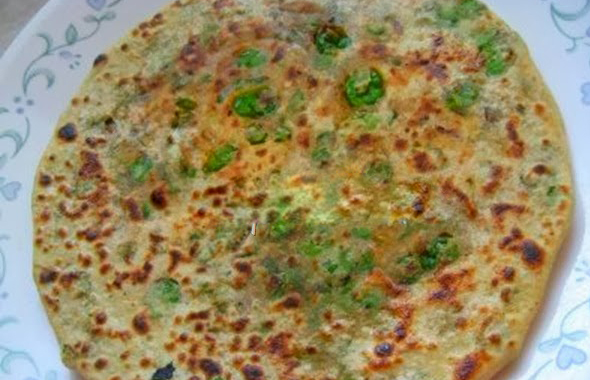Mama’s Punjabi Recipes – Karele de Chilke di Paronthi (Bitter Melon Peelings Paronthi)
It seems that everyone loves a nice, crispy, hot Punjabi parantha coated with the right amount of olive oil (some people still use butter or ghee). And many people also love the taste of karelas (bitter melon) too, usually eating it with roti. This recipe combines the taste of karelas with the texture of paranthas in a way that uses the peelings (or scrapings), which is the most beneficial part of the vegetable.
In North India, it is widely believed that karelas are good for you if you have high sugar. In the past twenty years, there have been many reports that karelas have an anti-diabetic property that can help to reduce the amount of sugar that is released into the blood and can play a role in the prevention and treatment of Type II diabetes. Karelas may even prevent or reverse insulin resistance. Some people drink karela juice, others take karela capsules. In any case, the beneficial aspects of the karela lie mostly in its rough outer skin.
So, this recipe uses th peelings – the part that most people usually throw away – to make fresh paranthas on the tava. Their taste is quite bitter, and some people love it. But for those who have high sugar, eating these paranthas may make a difference. To make the paranthas soft, add the oil; to reduce the bitterness of the karela peelings, add some water while making the dough. Use a small dab of oil on the tava (skillet) to make the parantha crisp and cook thoroughly.
And the nice part is that, when you make karelas, you get a chance to get two dishes out of one vegetable! These paranthas taste best with fresh, plain yogurt, although some people eat them with daal or another curry and find the taste is refreshingly different.
Ingredients
5 medium karela (bitter melon)
1 cup atta (unbleached wheat flour)
2 tablespoons of vegetable or olive oil – to make the paranthi soft
2 cups pani (water) – to take out some of the bitterness of the karela
Spices (to taste): namak (salt), mirch (red pepper), amchoor (dry mango powder)
Directions
1. Wash the karele carefully so that all the dirt is cleaned off. Dry the karele, then scrape off the skin with a knife and keep the peelings in a bowl or deep plate.
2. Pour the flour into the bowl, add the oil, salt and pepper, then slowly pour the water in while kneading the dough till it becomes a nice, round, tender firm ball. If you want, add the amchoor to cut the bitterness of the karela.
3. Dab the surface of the ball with a little water to keep it moist, cover the bowl and set aside for 10 minutes.
4. Pinch off a portion of the dough and make into a 2 inch round ball. Pour a little dry flour on the counter and roll the ball in it to coat it. Now use a velna (rolling pin) to roll the ball into a nice round, flat pancake, about 1/8 inch thick.
5. Place a tava (flat plate or flat skillet) on the stove and heat on medium. Now carefully place the flattened dough on the tava and spread a dab of oil around the circumference on the tava. When small brown spots appear, turn the parantha over and let it cook and use the oil again. When brown spots appear on this side, turn over and repeat till the parantha is lightly brown. The parantha is now ready to eat.
Shakuntla Malhotra is a skilled cook of Punjabi dishes made in the old-fashioned style that she learnt as a young woman in her ancestral home in Lyallpur, India before it became part of Pakistan after the Partition in 1947. People have often admired her cooking for its simplicity and taste that comes with each mouthful. Even in her mid-eighties, she continues to cook daily and agreed to share some of her delectable Punjabi recipes.
MAMA’S TIP OF THE WEEK
MAKING ONIONS SWEET AND POTATOES LESS STARCHY
Indians love to eat onions with their meals, especially if there is a spicy curry meat dish or daal and some really hot, fresh roti or naan. But sometimes the onions are just too strong and sting to be eaten easily. My husband’s grandmother used an old village trick to take the sting out of the onions. She would throw the onions outside in the rain and let them soak for a while. This would take the sting out.
Of course, it is not always possible to wait for a rainy day, so you can do the same thing by placing a peeled onion in a bowl of water for 20 minutes. This trick also works in getting the starch out of peeled potatoes, so it is okay for diabetes to eat.
Some villagers in the North just smash an onion and squeeze the water out of it between their palms in order to get the sting out.


